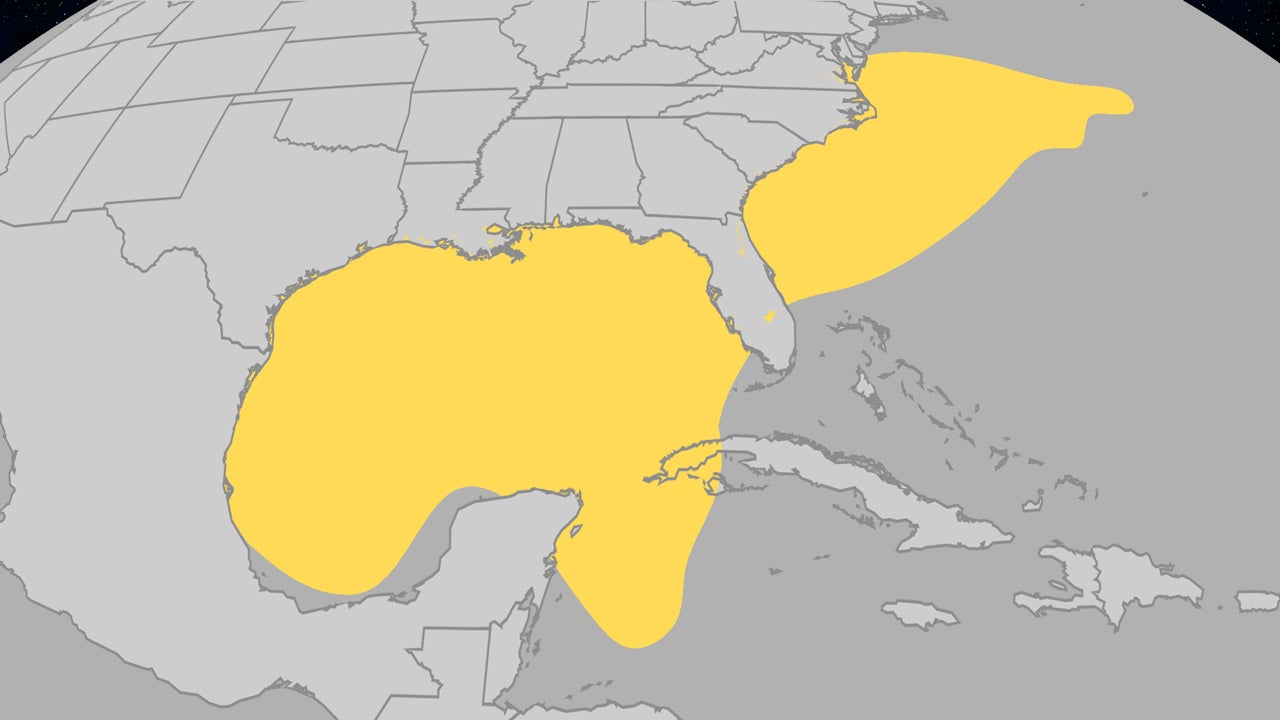Understanding June Hurricanes: Atlantic Storm Formation And Recent Trends

Welcome to your ultimate source for breaking news, trending updates, and in-depth stories from around the world. Whether it's politics, technology, entertainment, sports, or lifestyle, we bring you real-time updates that keep you informed and ahead of the curve.
Our team works tirelessly to ensure you never miss a moment. From the latest developments in global events to the most talked-about topics on social media, our news platform is designed to deliver accurate and timely information, all in one place.
Stay in the know and join thousands of readers who trust us for reliable, up-to-date content. Explore our expertly curated articles and dive deeper into the stories that matter to you. Visit Best Website now and be part of the conversation. Don't miss out on the headlines that shape our world!
Table of Contents
Understanding June Hurricanes: Atlantic Storm Formation and Recent Trends
June hurricanes are relatively rare, but their occurrence highlights the unpredictable nature of Atlantic storm formation. While the peak hurricane season runs from August to October, understanding the conditions that can lead to early-season storms like those in June is crucial for effective hurricane preparedness. This article delves into the science behind Atlantic hurricane formation and examines recent trends, emphasizing the importance of staying informed year-round.
The Science Behind Atlantic Hurricane Formation:
Hurricanes, also known as cyclones or typhoons depending on their location, are powerful rotating storms characterized by strong winds and heavy rainfall. Their formation requires a specific set of atmospheric and oceanic conditions:
- Warm Ocean Water: Sea surface temperatures of at least 80°F (27°C) are necessary to a depth of about 150 feet. This warm water provides the energy that fuels the storm's development.
- Atmospheric Instability: A significant difference in temperature between the surface air and the upper atmosphere creates instability, leading to upward air movement and the formation of thunderstorms.
- Low Wind Shear: Strong vertical wind shear (changes in wind speed and direction with height) can disrupt the organization of a developing storm. Low wind shear allows the thunderstorm clusters to build vertically, forming the characteristic rotating structure of a hurricane.
- Pre-existing Disturbance: A tropical wave, a trough of low pressure, or a frontal boundary often serves as a trigger for hurricane development. These disturbances provide the initial spin and organization needed for a storm to intensify.
Recent Trends in Early-Season Hurricanes:
While the majority of hurricanes form later in the season, there has been a noticeable increase in the frequency of early-season storms in recent years. Several factors may contribute to this trend:
- Climate Change: Rising global temperatures are leading to warmer ocean waters, potentially extending the window for hurricane formation.
- El Niño-Southern Oscillation (ENSO): The ENSO cycle, which affects global weather patterns, can influence hurricane activity. Certain phases of ENSO may favor the development of early-season storms.
- Improved Forecasting: Advances in weather forecasting technology allow for earlier detection and monitoring of potential hurricane development, leading to a greater awareness of early-season storms.
June Hurricanes: Case Studies and Impacts:
Although less frequent, June hurricanes can still have devastating consequences. Analyzing past June storms helps us understand their potential impact:
- 1967 – Hurricane Beulah: This Category 5 hurricane formed in the Gulf of Mexico in June, highlighting the potential for intense storms early in the season.
- 2012 – Tropical Storm Alberto: While not as intense as Beulah, Alberto's heavy rainfall caused significant flooding across the southeastern U.S.
These examples demonstrate that even early-season storms can pose substantial threats, emphasizing the need for proactive hurricane preparedness measures.
Preparing for Hurricane Season – Year-Round Awareness:
Regardless of the month, being prepared for hurricanes is crucial. Key steps include:
- Developing a Hurricane Plan: This should include evacuation routes, emergency supplies, and communication strategies.
- Monitoring Weather Forecasts: Stay updated on weather alerts and forecasts throughout the year, not just during peak hurricane season.
- Strengthening Your Home: Taking steps to protect your home from hurricane damage, like reinforcing windows and trimming trees, is a proactive approach.
By understanding the science behind hurricane formation and monitoring recent trends, we can better prepare for the potential threats posed by storms, even those occurring outside of the peak season. Remember, hurricane preparedness is not a seasonal activity; it's a year-round commitment to safety and security. Learn more about hurricane safety and preparedness from resources like the National Hurricane Center ().

Thank you for visiting our website, your trusted source for the latest updates and in-depth coverage on Understanding June Hurricanes: Atlantic Storm Formation And Recent Trends. We're committed to keeping you informed with timely and accurate information to meet your curiosity and needs.
If you have any questions, suggestions, or feedback, we'd love to hear from you. Your insights are valuable to us and help us improve to serve you better. Feel free to reach out through our contact page.
Don't forget to bookmark our website and check back regularly for the latest headlines and trending topics. See you next time, and thank you for being part of our growing community!
Featured Posts
-
 Stricter Us Immigration Policies For Cubans A Shift In Decades Long Policy
May 28, 2025
Stricter Us Immigration Policies For Cubans A Shift In Decades Long Policy
May 28, 2025 -
 Nios Growing Ev Infrastructure 100 New Swap Stations In Northeast China
May 28, 2025
Nios Growing Ev Infrastructure 100 New Swap Stations In Northeast China
May 28, 2025 -
 From Indy Car To Nascar Kyle Larsons Dnf And Coca Cola 600 Challenge
May 28, 2025
From Indy Car To Nascar Kyle Larsons Dnf And Coca Cola 600 Challenge
May 28, 2025 -
 Indy 500 Champ Alex Palou Takes In Pacers Knicks Game Concluding A Memorable Indiana Trip
May 28, 2025
Indy 500 Champ Alex Palou Takes In Pacers Knicks Game Concluding A Memorable Indiana Trip
May 28, 2025 -
 Game 4 Recap Thunders Dominant Performance Against Edwards And Randle
May 28, 2025
Game 4 Recap Thunders Dominant Performance Against Edwards And Randle
May 28, 2025
